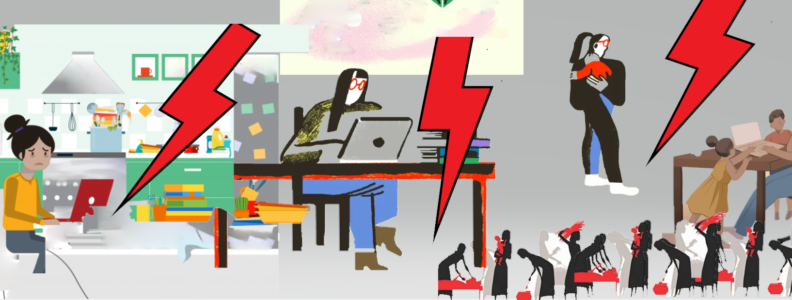Since 2017, March 8—International Working Women’s Day—has been commemorated by powerful transnational feminist strikes, inventing new practices and geographies of the strike, striking as much from (under)paid work as from unpaid domestic work, as from gender mandates that distribute labor and attempt to discipline us. In turn, the strike produced a time of encounter, for us to find each other and elaborate new ways of being together, weaving new alliances and connections between our different struggles.
Yet, this year, the pandemic and corresponding crisis brings a new set of difficulties. We already know that the pandemic hits women the hardest. Whether on the underpaid front lines in hospitals and health care centers, the education and service work deemed essential, or trapped in the domestic space due to quarantine measures and job loss, becoming full-time teachers, cooks, care-givers, women are increasingly putting our bodies on the line.
So, how do we strike in this context?
Building on our call for quarantine maps, we offer this mapping exercise as a way to start thinking about what (y)our strikes might look like. Do it alone or together, with groups of friends or compañeras, share the results with us (countercartographies(at)gmail.com) and each other, as you like. Draw directly on blank paper, make your own additions to a base map using stickers, icons, or collage. Make a time-use chart of how you spend time or another type of graphic representation of your life, work, and strike in the pandemic.
* Map your daily life: Where do you go? Where/when do you work? Paid work, unpaid, underpaid work. How is value extracted from your everyday life? When, and where, don’t you work?
* Map your networks: What networks of care are you embedded in? Whose labor sustains your quarantine? Whose quarantine does your labor sustain?
* What is your strike? Looking at your map/diagram of all your labor, how will you strike? Where/when will you strike? What will you strike against, what will you strike for?
* What would it take to make your strike possible? We know we cannot strike alone. We know that the care work we do is vitally necessary, and yet, we must strike. Could you imagine a map of connections, support, the infrastructure, that would make your strike possible?

